Tracking the Changing Climate with Earth Observations
Indicators of change
The climate is a complex system and it is changing fast. It can be hard to keep track of what is going on. We have put together a dashboard which gathers together the key indicators of climate change.
The indicators are based on earth observations made at surface stations, by ships and buoys at sea, from satellites and by observers and research teams around the world. These earth observing networks are crucial for understanding the changing climate.
There are many data sets out there providing useful information. As well as the data sets produced by the Met Office Hadley Centre, we have brought together data from respected institutes and research groups around the world to provide a more complete picture of what's happening in the climate.
The front page shows the main indicators. Beneath each one there is additional detail, drilling down into why the indicator is important, how it has changed and how it was calculated. The pages also link through to the data so that you can explore for yourself.
Images on the climate dashboard can be used free of charge under an Open Government Licence.
The CSV data series on the climate dashboard can be used free of charge under an Open Government Licence, and we ask you to attribute the original data source and/or paper (if provided) alongside the climate dashboard.
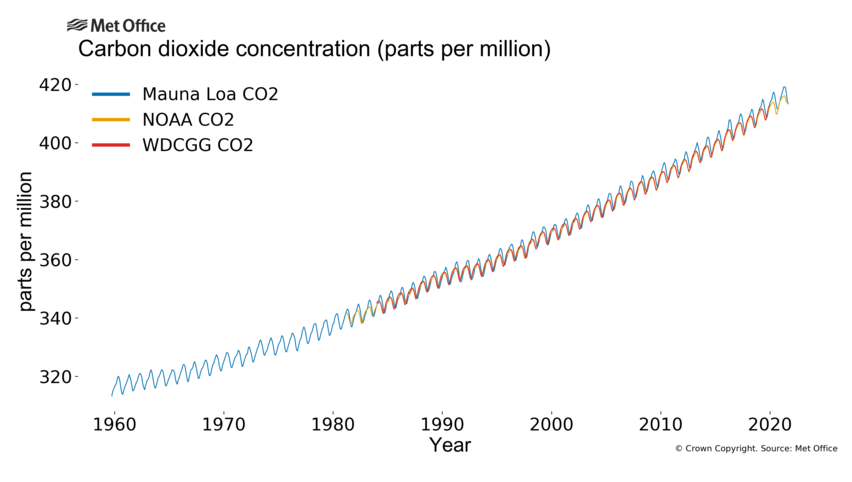
Greenhouse gases
Dec 2023: 421.9ppm [Mauna Loa CO2]
The increase in the amount of greenhouse gases in the atmosphere has led to a long-term increase in global temperature. The pre-industrial concentration of CO2 was around 280 ppm.
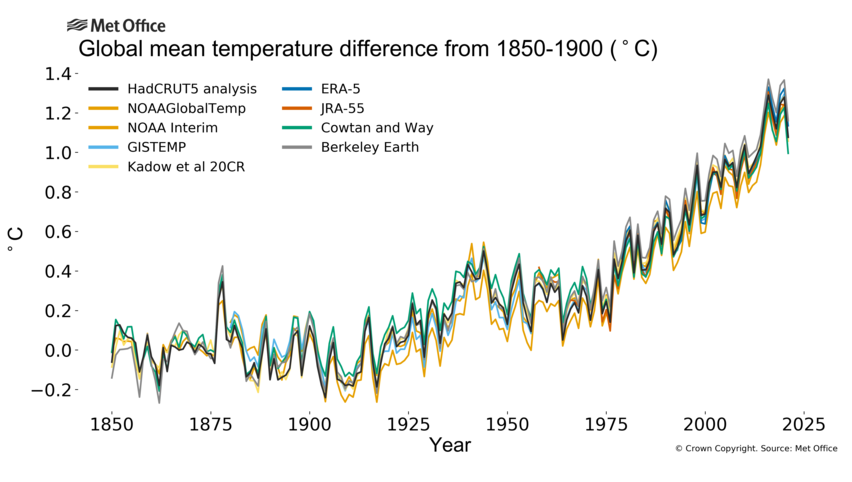
Global temperature
Dec 2023: 1.67±0.05°C [HadCRUT5]
Global temperature averaged over the decade 2011-2020 was 1.1°C warmer than the 1850-1900 average. The past seven years were the warmest seven years on record.
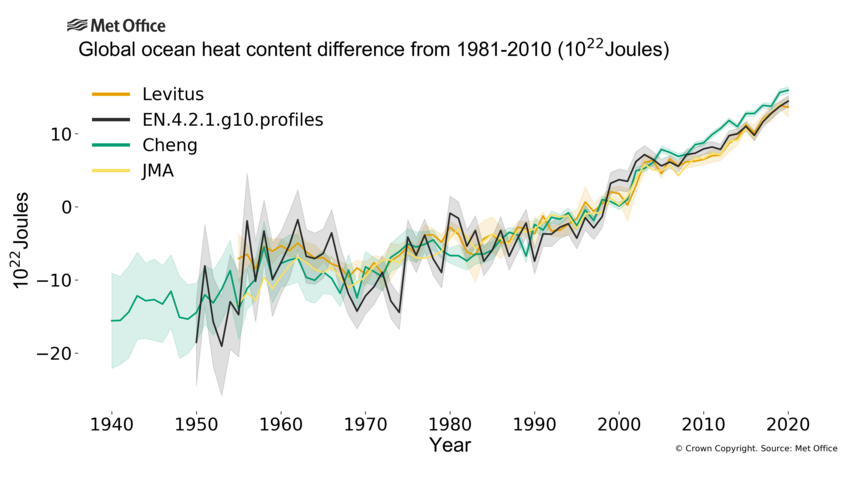
Ocean heat content
Dec 2023: 18.0x1022J [Levitus]
Around 90% of the energy trapped by greenhouse gases goes into the oceans. The long-term warming of the oceans is an important contribution to sea level rise.
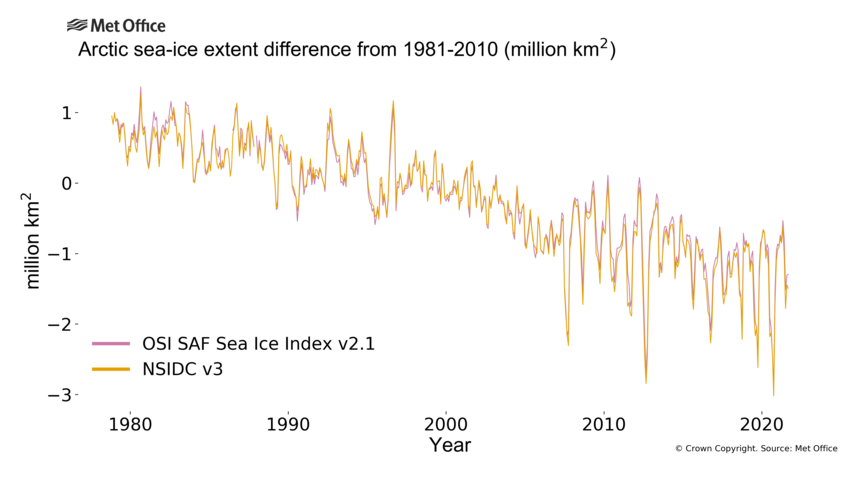
Sea-ice extent
Dec 2023: -0.8 million km2 [NSIDC v3]
Since satellite records began, sea-ice extent has decreased in the Arctic in all months and till 2016, increased slightly in the Antarctic.

Sea level
Dec 2023: 111.2mm [AVISO]
Global average sea level has risen by approximately 3 mm/year since satellite measurements began in 1993.
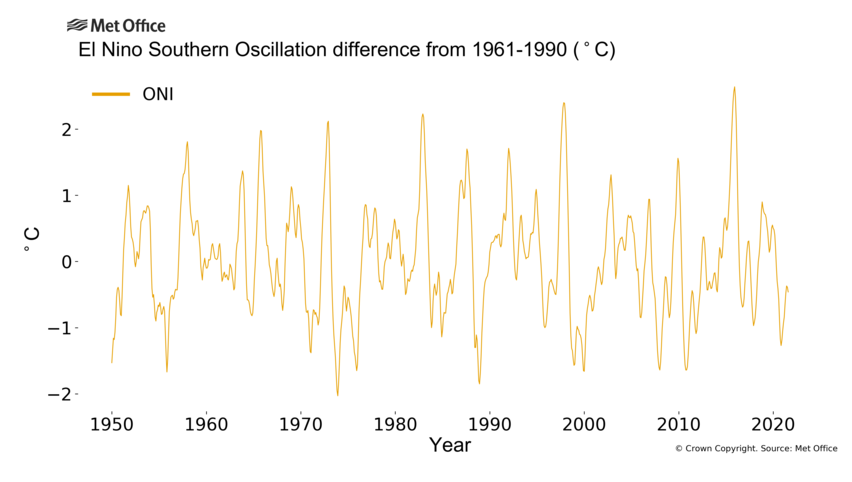
Climate modes
El Niño is one of the largest sources of year-to-year variability
Climate modes describe major patterns of variability in the climate.